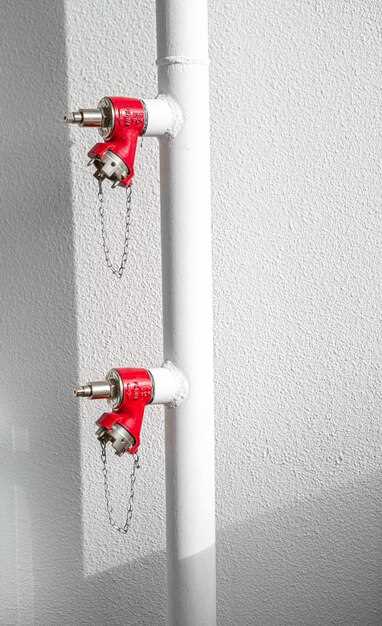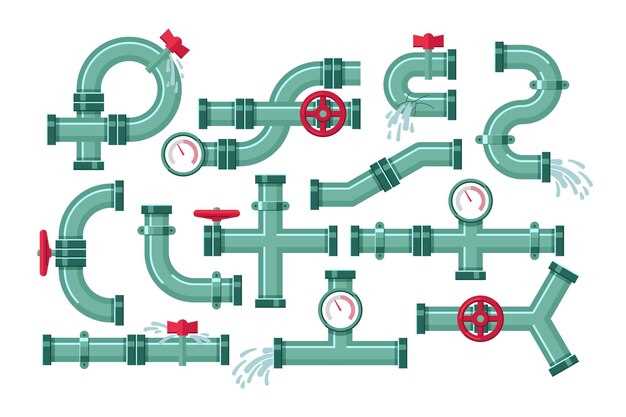
A water pump is a critical component of a vehicle’s cooling system, responsible for circulating coolant to maintain optimal engine temperature. When a water pump begins to fail, it can lead to severe engine damage if not addressed promptly. Understanding the signs of a failing water pump is essential for any vehicle owner, as early detection can save both time and money on repairs.
There are several indicators that may suggest your water pump is struggling. Overheating engine is one of the most common symptoms, often caused by a lack of coolant circulation. Additionally, you might notice leaking coolant beneath your vehicle, typically around the water pump area, which can signal a gasket failure or seal wear. It’s also important to be aware of unusual noises, such as grinding or whining sounds, that may indicate internal damage to the pump itself.
Other signs include a decrease in coolant levels with no apparent leaks, as well as frequent puddles under your vehicle that could point to a failing pump. Paying attention to these symptoms can help you take action before the issue escalates, ensuring your vehicle remains in good working order.
Unusual Noises from the Pump Area
Unusual noises emanating from the water pump area can be an early indicator of potential failure. Recognizing these sounds and understanding their implications is essential for timely intervention and repair.
Common noises include:
| Noise Type | Possible Cause | Recommended Action |
|---|---|---|
| Grinding or Rattling | Worn bearings or loose components | Inspect and tighten all connections; replace bearings if necessary |
| Hissing or Whistling | Air leakage in the system | Check for loose fittings or damaged hoses; seal any leaks found |
| Banging or Knocking | Water hammer effect or improper mounting | Examine the mounting brackets and support; install water hammer arrestors if needed |
| High-Pitched Squeal | Dry or worn-out pump seals | Replace seals or lubricate as recommended by the manufacturer |
| Constant Low Hum | Electrical issue or motor bearing wear | Consult an electrician for electrical concerns; check motor bearings for wear |
Catching these sounds early can aid in diagnosing the specific issue and prevent extensive damage. Regular maintenance and inspections are crucial in identifying and addressing any unusual noises, ensuring the longevity of the pump system.
Decreased Water Pressure in the System

A significant indicator of a failing water pump is decreased water pressure within the entire system. This issue can manifest as weak or inconsistent flow from faucets, showers, or irrigation systems. When the water pressure drops unexpectedly, it often signals an underlying problem with the pump’s functionality.
Several factors contribute to this decline in pressure. Firstly, wear and tear on the pump components can lead to inefficiencies in water movement. For instance, a worn impeller or damaged seals may prevent the pump from effectively pushing water through the system. Additionally, blockages in pipes due to sediment buildup can restrict flow, further complicating the issue.
If you notice a gradual decrease in water pressure, it is crucial to investigate the source promptly. Start by checking the pressure gauge, if available, to determine the specific pressure levels. If the readings are lower than the normal operating range, consider performing maintenance or consulting with a professional.
Moreover, air leaks in suction lines can create an imbalance, resulting in inconsistent pressure. Ensuring that all connections are secure and free of leaks is essential for maintaining optimal performance.
In summary, decreased water pressure in the system is a clear sign that the water pump may be failing. Addressing this issue early can prevent more severe complications and ensure a reliable water supply.
Visible Leaks Around the Water Pump
Visible leaks around the water pump are one of the most telling signs of potential failure. These leaks can manifest as puddles, drips, or streaks of fluid, indicating that the pump is not functioning properly. Identifying the source and type of leaks is critical to understanding the issues at hand.
-
Coolant Leaks:
Coolant leaks are often the most common type associated with failing water pumps. Look for a green, orange, or reddish fluid pooling under the vehicle. This fluid is typically a mixture of water and antifreeze, which is essential for engine cooling.
-
Water Leaks:
Pure water leaks may occur when the water pump is compromised. This can be observed as clear fluid leaking, particularly after the engine has been running. This signals that the pump seal is failing.
-
Staining:
Even if liquid is not dripping, stains on the engine or surrounding areas may indicate a slow leak. These spots can often be a mix of coolant and engine oil, suggesting multiple issues with the pump or adjacent components.
It is essential to address any visible leaks promptly, as they can lead to severe engine overheating and potential engine damage. Regular inspections can help detect leaks early, allowing for timely repairs and maintenance of the water pump system.
Overheating Engine Due to Pump Failure
The water pump plays a crucial role in maintaining the engine’s temperature by circulating coolant throughout the engine and radiator. When the pump fails, it can lead to insufficient coolant circulation, causing the engine to overheat. One of the most common indicators of a failing water pump is a rise in engine temperature, often noticeable on the temperature gauge. If the needle moves into the red zone or a warning light activates, it is essential to investigate further.
Signs of water pump failure include unusual noises like grinding or whining, which may indicate worn bearings or a damaged impeller. Additionally, coolant leaks around the pump’s housing can signal a failure, as the pump may not be able to maintain pressure. If left unaddressed, overheating can result in severe engine damage, including warped cylinder heads or a blown head gasket.
Regular maintenance, including checking coolant levels and monitoring the condition of the water pump, is vital in preventing engine overheating. If any symptoms of pump failure arise, it is critical to have the issue diagnosed and resolved promptly to avoid costly repairs and ensure the longevity of the engine. Taking proactive measures can save time and resources, maintaining the vehicle’s performance and reliability.
Frequent Warning Lights on the Dashboard
One of the most visible indicators of a failing water pump is the frequent illumination of warning lights on your vehicle’s dashboard. These warning lights serve as an early alert system, signaling potential issues within the engine or cooling system. It is essential to understand what these lights mean and how they relate to the water pump’s function.
First, the temperature warning light is critical. If this light turns on, it can indicate that the engine is overheating, which may be due to insufficient coolant circulation caused by a malfunctioning water pump. Overheating can lead to severe engine damage, making it imperative to address this warning promptly.
Second, the check engine light may also activate due to water pump failure. This light can signal various engine complications, including problems with the cooling system. If the water pump is not functioning correctly, it can affect the engine’s performance and trigger this warning.
Additionally, the low coolant level light can mean there is inadequate coolant in the system, which can be a direct consequence of a leaking water pump. A damaged water pump can cause coolant to escape, leading to a drop in the coolant level.
Lastly, keeping an eye out for other warning indicators, such as the oil pressure light or battery light, is also essential. While these may not be directly related to the water pump, they could suggest other issues arising from overheating or engine stress due to a failing water pump.
In summary, frequent warning lights on the dashboard are significant signs that your vehicle’s water pump may be failing. Regular attention to these indicators can help prevent more extensive damage to the engine and ensure the overall health of your vehicle.
Increased Fuel Consumption Related to Pump Issues
One of the less obvious signs of a failing water pump is increased fuel consumption. This can occur due to the pump’s inability to efficiently circulate coolant throughout the engine, which leads to overheating and a subsequent drop in engine performance. As the engine struggles to maintain optimal temperatures, it may require more fuel to achieve the same output, causing a noticeable spike in fuel usage.
The water pump is responsible for maintaining a steady flow of coolant, ensuring that the engine operates at an efficient temperature range. When the pump becomes compromised, temperatures can rise, leading the engine control unit (ECU) to adjust the air-fuel mixture in response. An ineffective cooling system can result in the engine running richer, which means more fuel is consumed than necessary.
Additionally, if the water pump is leaking or has developed excessive wear, it can lead to coolant loss. Insufficient coolant can cause the engine to overheat, further exacerbating fuel inefficiency. The engine may experience pre-ignition or knocking, prompting the ECU to increase fuel delivery to protect the engine from damage.
Monitoring fuel consumption can be a useful tool for identifying potential water pump issues. If you notice a significant increase in fuel consumption without any changes in driving habits, it may be prudent to investigate the water pump and the overall cooling system. Early detection of a failing water pump not only conserves fuel but also helps avoid more costly engine repairs in the long run.















